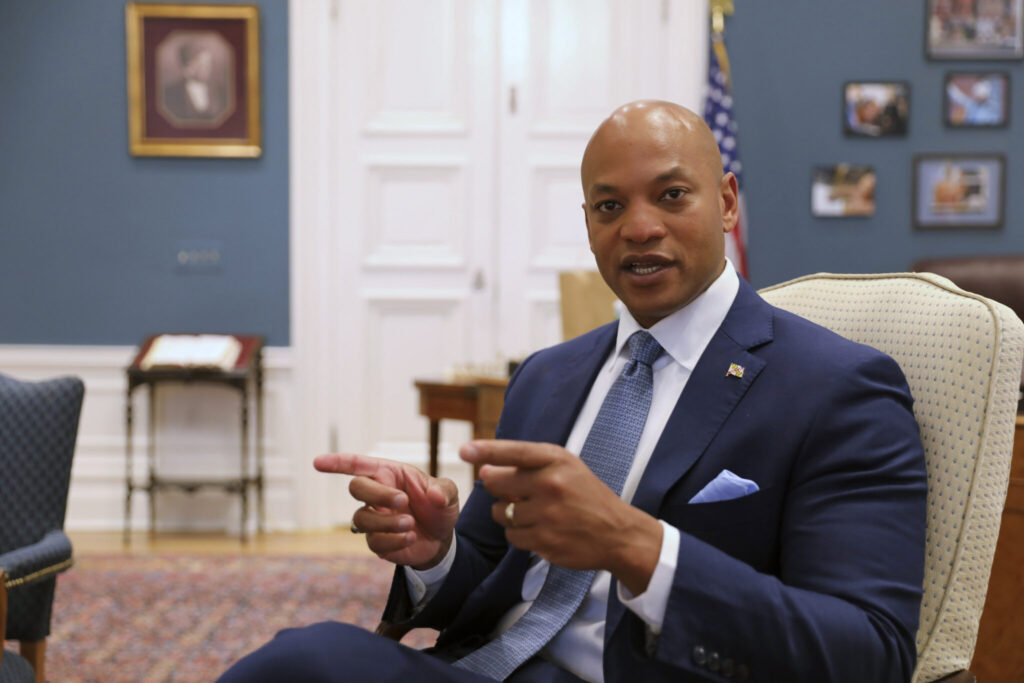Maryland Gov. Wes Moore said he plans to meet with members of Congress to discuss support for rebuilding the collapsed Francis Scott Key Bridge, which has blocked the main shipping channel at Baltimore’s port for nearly two weeks.
Quick Read
- Maryland Governor Wes Moore plans to meet with Congress members to discuss support for the reconstruction of the collapsed Francis Scott Key Bridge, crucial to Baltimore’s port.
- An emergency legislative measure, authorizing the use of the state’s rainy day fund to aid port employees, has been approved and awaits Moore’s signature.
- The bridge’s collapse on March 26, caused by the cargo ship Dali striking it, has obstructed the main shipping channel, affecting port operations.
- Efforts continue to recover the bodies of six workers believed to have died in the incident, with three already found.
- Temporary alternate channels are being established, with expectations to partially reopen the channel by the end of April and restore full port capacity by the end of May.
- Significant progress has been made in debris removal, with 350 tons of steel extracted from the river recently.
- Over 50 salvage divers and 12 cranes are involved in the operation to cut and remove bridge sections to clear the waterway and allow the ship to move.
The Associated Press has the story:
MD Gov., members of Congress to meet to discuss support for rebuilding collapsed bridge
Newslooks- ANNAPOLIS, Md. (AP) —
Maryland Gov. Wes Moore said he plans to meet with members of Congress to discuss support for rebuilding the collapsed Francis Scott Key Bridge, which has blocked the main shipping channel at Baltimore’s port for nearly two weeks.
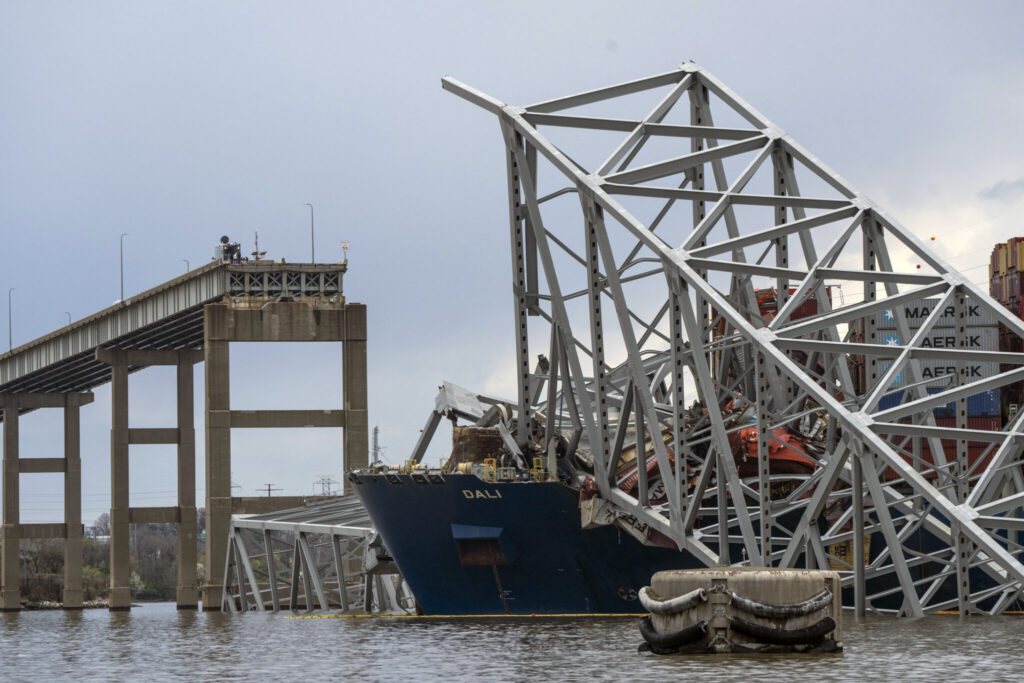
“I’m going to be spending part of this week with our delegation going down and meeting with leaders and ranking members in the Congress and letting them know that this issue is not partisan. This is a patriotic responsibility to be able to support one of this country’s great economic engines,” Moore said in an interview with The Associated Press. “This is an opportunity to support a port that is directly responsible for the hiring of tens of thousands of people.”
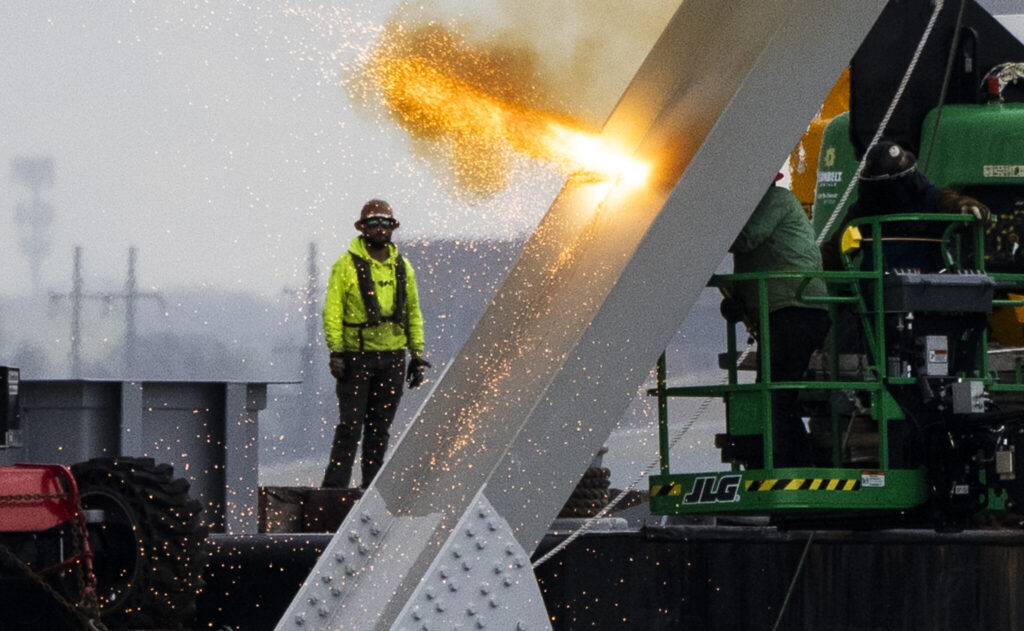
As Maryland lawmakers reached the end of their legislative session Monday, a measure authorizing use of the state’s rainy day fund to help port employees was approved and sent to Moore’s desk. The governor planned to sign the emergency legislation Tuesday, putting it into effect right away.
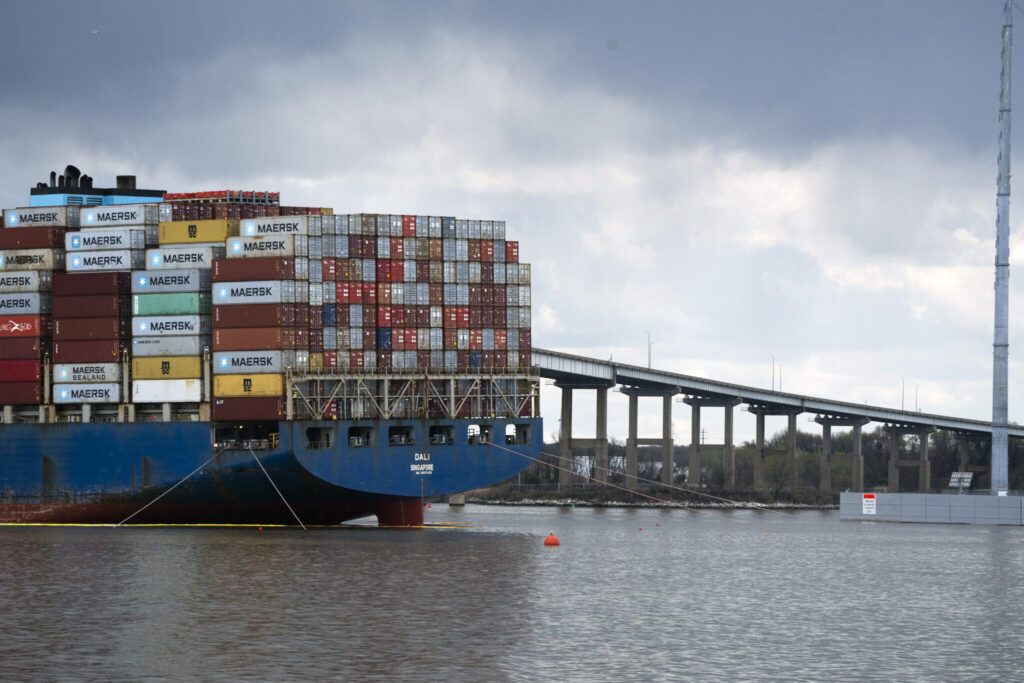
The bridge collapsed March 26 after being struck by the cargo ship Dali, which lost power shortly after leaving Baltimore, bound for Sri Lanka. The ship issued a mayday alert with just enough time for police to stop traffic, but not enough to save a roadwork crew filling potholes on the bridge.
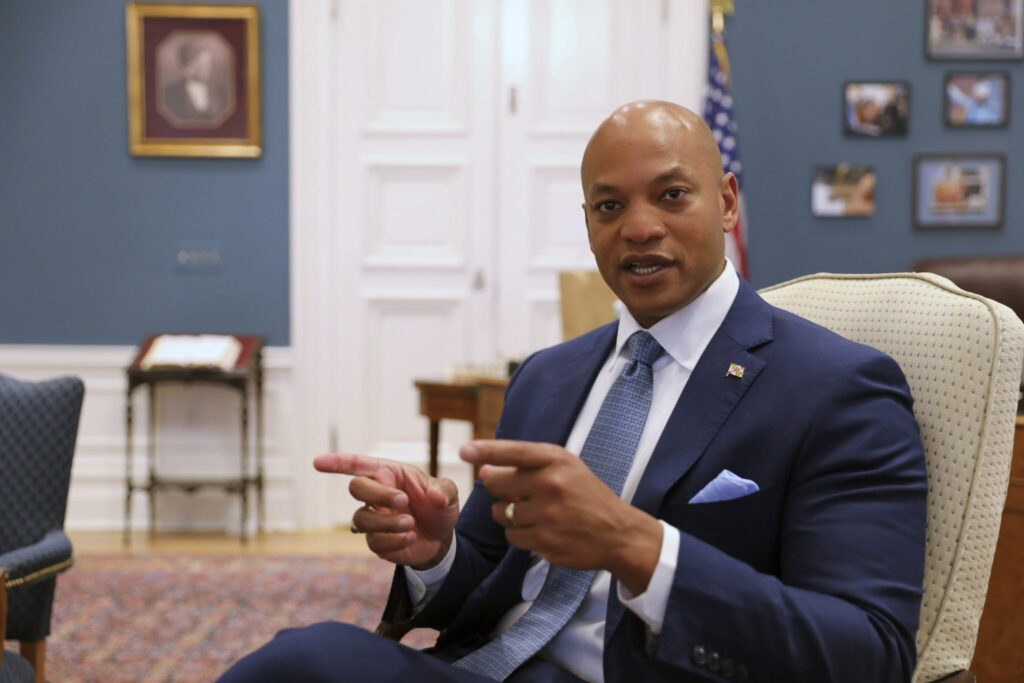
Authorities believe six workers — immigrants from Mexico, Guatemala, Honduras and El Salvador — plunged to their deaths in the Patapsco River. Two others survived. The bodies of three workers have been recovered, but the search for the other victims continues.
Moore said the state remains focused on supporting the families of the six workers and bringing them closure.
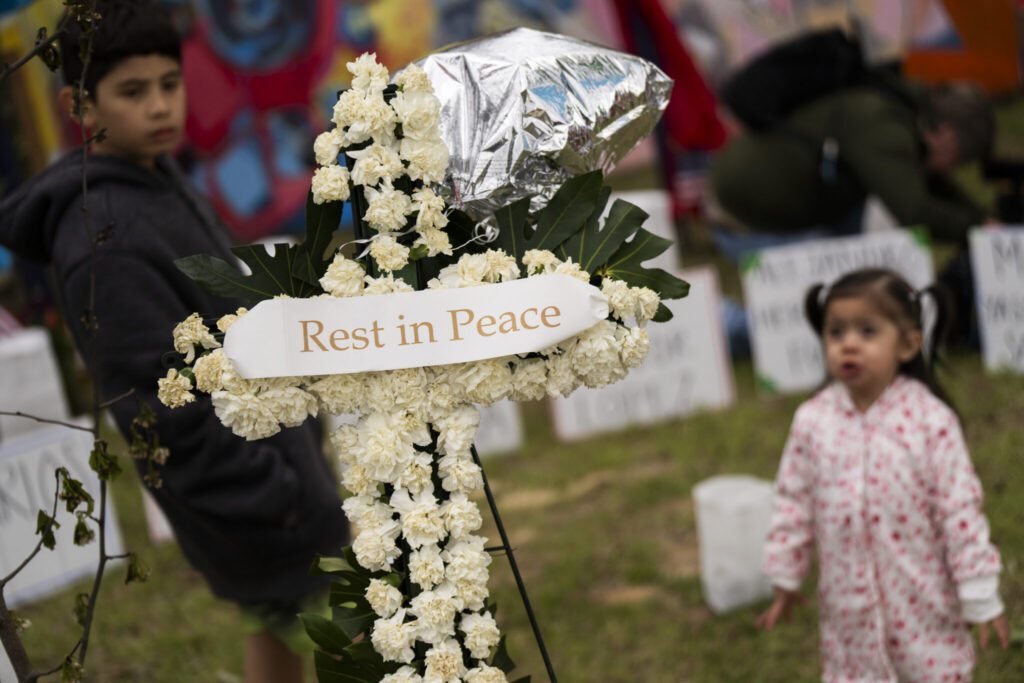
“We are still very much focused on bringing closure and comfort to these families, and the operations to be able to bring that closure to these families,” Moore said. “It has not stopped. It continues to be a 24/7 operation.”
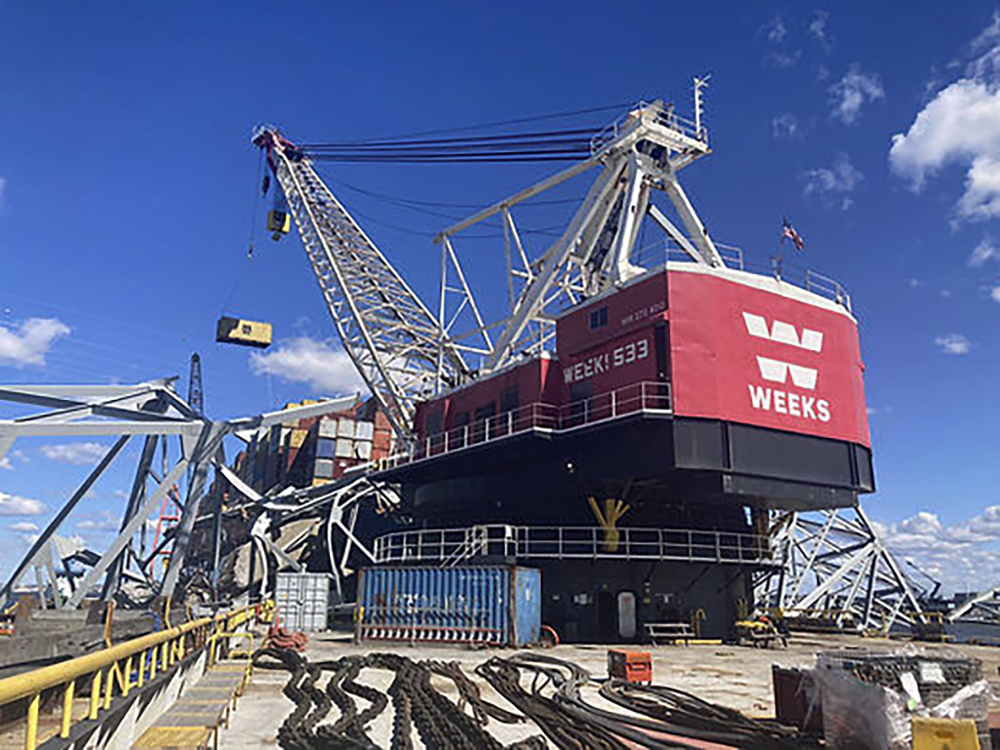
Temporary, alternate channels have been cleared, and the U.S. Army Corps of Engineers said last week that it expects to open a limited-access channel for barge container ships and some vessels moving cars and farm equipment by the end of April. Officials are aiming to restore normal capacity to Baltimore’s port by the end of May.
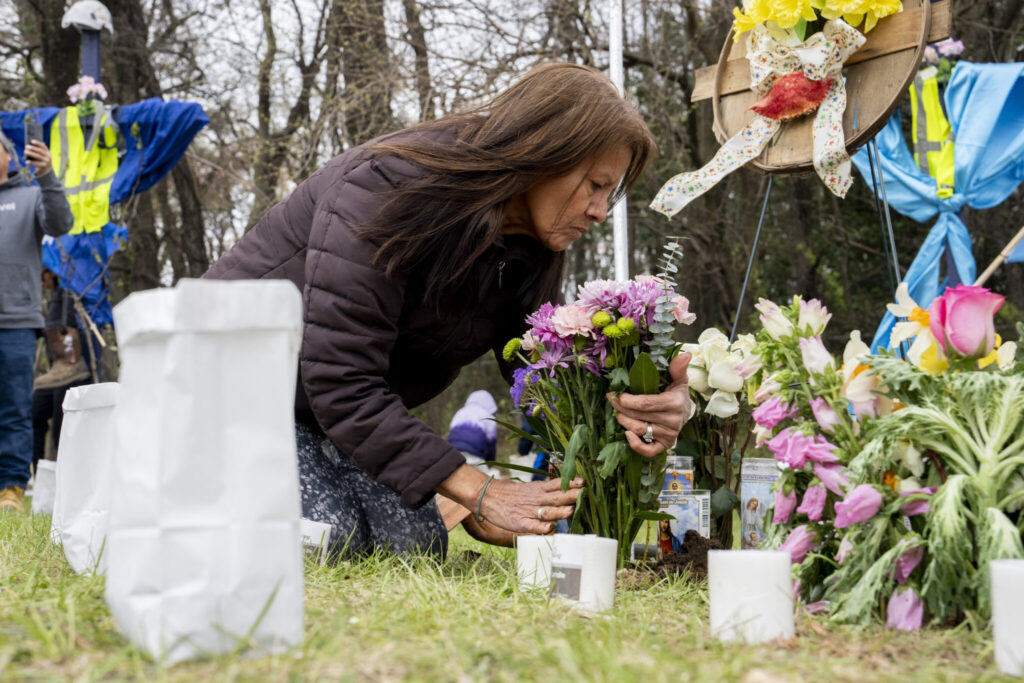
Moore was upbeat about progress in reopening channels.
He said that if he had been told the morning of the collapse that there would be two channels open in two weeks, “I would have said that sounds really ambitious, considering what we saw, but that’s where we are.”
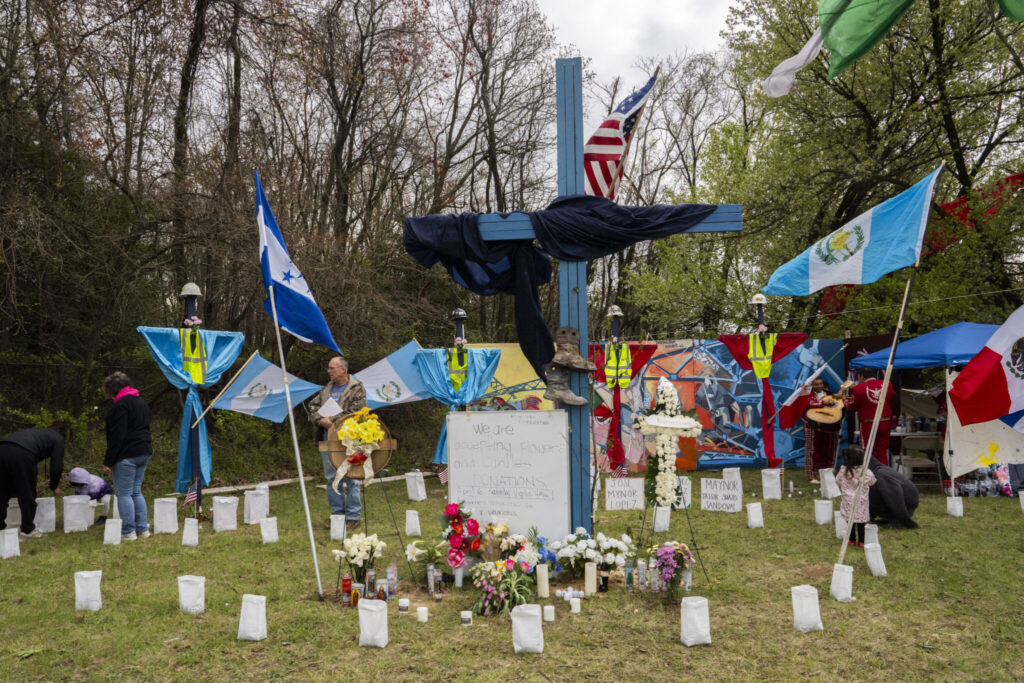
The governor also spoke of progress in removing debris, saying that crews were able to pull 350 tons (318 metric tons) of steel from the Patapsco River on Sunday.
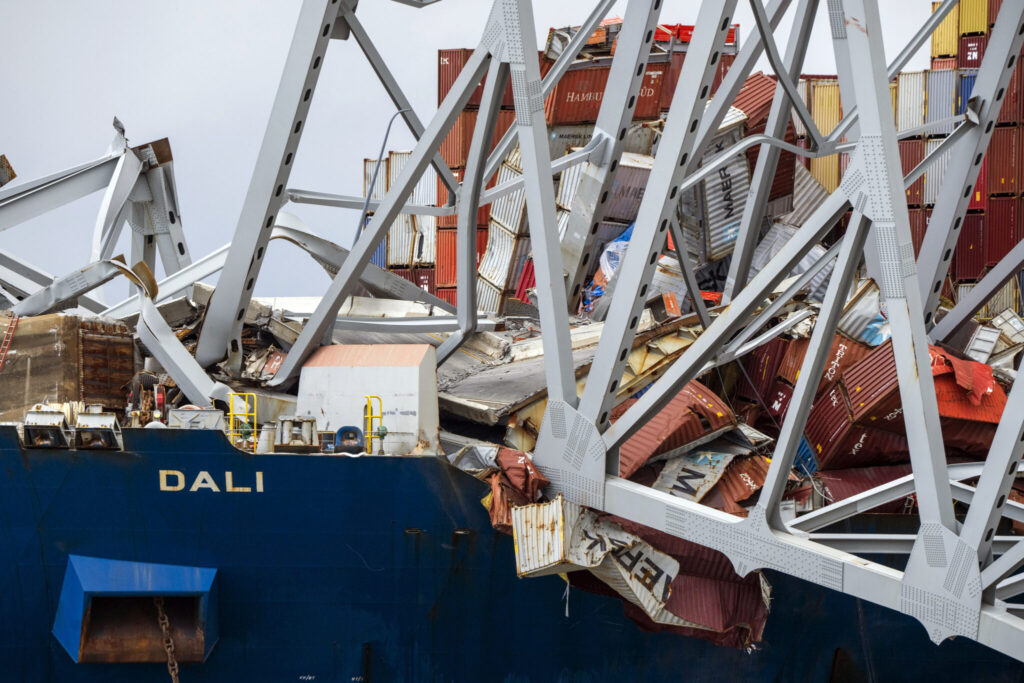
More than 50 salvage divers and 12 cranes are on site to help cut out sections of the bridge and remove them from the key waterway. Crews began removing containers from the deck over the weekend, and they’re making progress toward removing sections of the bridge that lie across the ship’s bow so it can eventually move, according to the Key Bridge Response Unified Command.

